What are the basic methods of wastewater treatment?
 Release Date:2021-06-29
Release Date:2021-06-29
 Reading volume:
Reading volume:
There are many kinds of pollutants in wastewater, including soluble pollutants, colloidal pollutants and suspended pollutants. From the chemical nature, there are organic pollutants and inorganic pollutants. According to the degree of biodegradation, organic pollutants can be divided into biodegradable organic matter and non-biodegradable organic matter. Wastewater treatment is the process of using various technical measures to separate various forms of pollutants from wastewater, or to differentiate them into harmless and stable substances, and then purify wastewater. According to the effect principle of technical measures and removal objectives, wastewater treatment methods can be divided into physical treatment, chemical treatment and biological treatment.
1, wastewater physical treatment Wastewater Physical treatment is the method of treating wastewater through physical effects, mainly used to separate and remove insoluble suspended pollutants in wastewater. During the treatment process, the chemical properties of the wastewater do not change. The primary process includes screen interception, gravity separation (natural deposition and flotation), centrifugal separation, etc. The treatment equipment and structures used include grids and screens, sand settling ponds and sedimentation ponds, air flotation equipment, centrifuges, cyclone separators, etc.
(1) The grid and screen grid are composed of a set of parallel metal grid bars with a certain interval structure. It is used to remove coarse suspended matter and floating matter from wastewater and prevent blockage of pipeline valves or pumps in subsequent treatment structures. A screen is a filtration device composed of a porous filter plate or a metal mesh for the removal of fine suspended matter.
(2) The basic principle of the sedimentation method is to use gravity to sink the heavier solid material in the wastewater, and then reach the intention of separating from the wastewater. This process is simple and useful. Therefore, it is widely used in wastewater treatment and is an important treatment structure. In the wastewater treatment, the sedimentation method is mainly applied to: (1) the removal of inorganic sand in the sedimentation tank; (2) Removal of suspended organic matter heavier than water in the initial sedimentation tank; ③ Remove biological sludge in the secondary sedimentation tank; (4) After the coagulation process, the flocculant composed of coagulation is removed; The moisture in the sludge is separated in the sludge thickening tank to enrich the sludge.
(3) Air flotation method is used to separate fine particles of pollutants that are close to or less than the specific gravity of water and difficult to be deposited by their own weight. The basic principle is that the flow of air into the wastewater produces a lot of fine bubbles, which adhere to the fine particles of pollutants, forming a floating body less specific than water, floating on the surface of the water. Then arrive at the intention of separating fine particles from the wastewater.
(4) Centrifugal separation makes the wastewater containing suspended matter rotate at high speed in the equipment. Because the quality of suspended matter and wastewater is different, the centrifugal force is different, so the method of separating suspended matter and wastewater can be selected. According to the generation of centrifugal force, centrifugal separation equipment can be divided into two types: cyclone separator and centrifuge.
2, chemical treatment of wastewater Chemical treatment is the use of chemical reactions to separate the recovery of pollutants in wastewater, or convert it into harmless substances, the primary process is neutralization, coagulation, chemical deposition, oxidation recovery, adsorption, ion exchange and so on.
(1) Neutralization Neutralization is a chemical method of neutralizing acidic or alkaline wastewater. Neutralization treatment tries to follow the principle of "treating waste with waste", giving priority to the use of waste acid or waste alkali, or the possibility of direct neutralization of acidic wastewater and alkaline wastewater. Second, consider the use of chemicals (neutralizers) for neutralization.
(2) Coagulation method The coagulation method is to add a certain amount of coagulant in the wastewater, so that the colloidal pollutants and some fine suspended matter that are difficult to naturally deposit in the wastewater are reacted to form a certain size and fine flocculant. After the process of destabilization, coagulation, bridging, etc., the colloidal pollutants are separated from the wastewater by deposition in the subsequent sedimentation tank. After coagulation, the turbidity and chroma of wastewater can be reduced, and polymer substances, suspended or colloidal organic pollutants and some heavy metals can be removed.
(3) Chemical deposition method Chemical deposition method is to add some chemical substances to the wastewater, react with some dissolved pollutants in the wastewater, form insoluble salt and deposition, and then reduce the concentration of dissolved pollutants in the water. Chemical deposition is generally used to treat industrial wastewater containing heavy metals. According to the different sedimentary agents used and the varieties of insoluble salts produced, chemical deposition can be divided into hydroxide deposition, sulfide deposition and barium salt deposition.
(4) Oxidation recovery method Oxidation recovery method is the use of toxic and harmful substances dissolved in waste water in the oxidation recovery reaction can be oxidized or restored to transform it into non-toxic and harmless substances. The oxidants used in wastewater treatment are ozone, chlorine, sodium hypochlorite and so on, and the restorants are iron, zinc, sodium bisulfite and so on.
(5) Adsorption method Adsorption method is the use of porous solid adsorbent on the same liquid phase interface through material transport to transport the pollutants in the wastewater to the solid adsorbent, and then the pollutants in the wastewater are removed separately. Porous solid materials with adsorption ability are called adsorbents. According to the different adsorbent surface adsorption ability, it can be divided into physical adsorption, chemical absorption and ion exchange adsorption. The adsorption process in wastewater treatment is often a summary of several adsorption processes. The adsorbents commonly used in wastewater are activated carbon, sulfonated coal, zeolite and so on.
(6) Ion exchange method Ion exchange refers to the ion exchange process at the interface of solid particles and liquids. Ion exchange water treatment is a method to remove impurities and harmful substances in water and wastewater by using the selective exchange ability of ion exchangers.
(7) Membrane separation can make one or several components in the solution can not pass through the membrane, and other components can pass through the membrane, which is called semi-permeable membrane. Membrane separation is the method of separating particles, molecules or ions from water by selective immersion of special semi-permeable membranes, including electrodialysis, dispersion dialysis, microfiltration, ultrafiltration and reverse immersion.
3. There are many microorganisms in the natural world of biological wastewater treatment. These microorganisms have the ability to oxidize and differentiate organic matter and convert it into stable inorganic matter. The biological treatment of wastewater is to use the function of microorganisms, take certain artificial measures, create an environment conducive to the growth and reproduction of microorganisms, improve the ability of microorganisms to oxidize and differentiate organic matter, and then purify wastewater. Organic pollutants in wastewater. According to the respiratory characteristics of microorganisms, biological treatment can be divided into aerobic biological treatment and anaerobic biological treatment. According to the growth state of microorganisms, the biological treatment of wastewater can be divided into suspension growth (such as activated sludge method) and attached growth (biofilm method).
(1) Aerobic biological treatment Aerobic biological treatment is the use of aerobic microorganisms, in an aerobic environment, the organic matter in the wastewater into carbon dioxide and water. Aerobic biological treatment is the primary method of biological treatment of wastewater with high efficiency and wide application. There are many processes of aerobic biological treatment, including activated sludge process, biological filter, biological turntable, biological touch oxidation and so on.
(2) Anaerobic biological treatment Anaerobic biological treatment is the use of facultative anaerobic bacteria and specific anaerobic bacteria in anaerobic conditions to degrade organic pollutants treatment skills, the final product is methane, carbon dioxide and so on. It is mainly used for the treatment of organic sludge and high-concentration organic industrial wastewater, such as beer wastewater
(3) Natural biological treatment Natural biological treatment is the use of microorganisms to grow and multiply under natural conditions to treat wastewater. The primary feature is simple process, low construction and operation costs, but the purification function is easily limited by natural conditions. The primary handling skills are stable pool and land handling.
4. Due to the chaotic composition of pollutants in wastewater, a single treatment unit cannot remove all pollutants in the wastewater, and often requires multiple treatment units to be organically combined into a suitable treatment process. The primary basis for confirming the wastewater treatment process is the level of treatment to be achieved. The degree of treatment mainly depends on the nature of the original wastewater, the outlet of the treated wastewater, the environmental standards and self-cleaning ability of the treated wastewater.
(1) The primary task of the general treatment process for urban sewage is to remove suspended solids and dissolved organic matter contained in urban sewage. The general treatment process can be divided into pre-treatment, primary treatment, secondary treatment, and tertiary treatment according to the degree of treatment.
① Pre treatment: The primary process includes grids and sand settling tanks, which are used to remove coarse suspended solids and heavy inorganic sand particles from urban sewage to ensure the normal operation of subsequent treatment facilities and reduce load.
② Primary treatment: Primary treatment is generally physical treatment, primarily aimed at removing suspended solids from wastewater. The removal rate of suspended solids is 50% to 70%, and the removal rate of organic matter is about 25%. Therefore, the first level processing belongs to the preprocessing of the second level processing. The primary process is the sedimentation tank.
③ Secondary treatment: Secondary treatment is biological treatment used to remove colloids or soluble organic substances from wastewater. The organic matter removal rate can reach over 90%, and the treated effluent BOD can be reduced to 20-30mg/L, meeting the national wastewater discharge standards. The primary processes include activated sludge method, biofilm method, etc.
④ Third level treatment: After secondary treatment, residual organic matter, nitrogen, and phosphorus in the wastewater are further removed to meet stricter wastewater discharge or reuse requirements. The selected process includes physical and chemical methods such as biological nitrogen and phosphorus removal, coagulation deposition, filtration, adsorption, etc.
(2) Due to the chaotic composition of industrial wastewater and changes in industry, production processes, and raw materials, there is no universal process for industrial wastewater treatment.
Related News
-
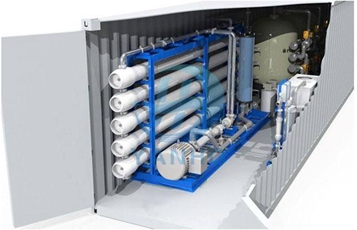
Corrosion resistance of seawater desalination equipment materials
View details


-
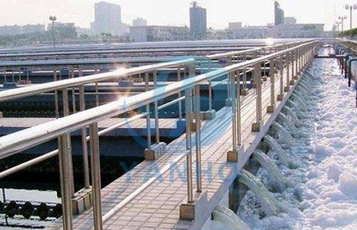
What are the basic methods of wastewater treatment?
View details


-
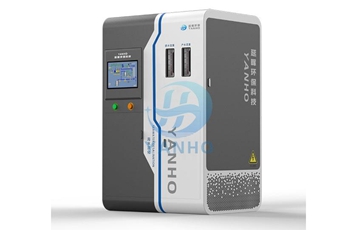
Where we should pay attention when the desalination equipment arrives at the site
View details


-
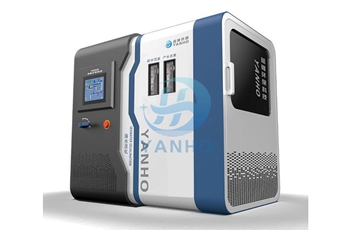
Reasons for no water in Marine desalination equipment
View details


CONTACT US

Official Account


Mobile Browsing




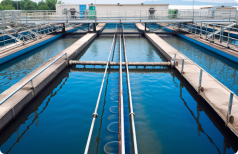

 Hotline:
Hotline: Address:No.76 Longfei Road, Chengyang District,Qingdao, Shandong Province, China
Address:No.76 Longfei Road, Chengyang District,Qingdao, Shandong Province, China E-mail:y15092162376@163.com
E-mail:y15092162376@163.com